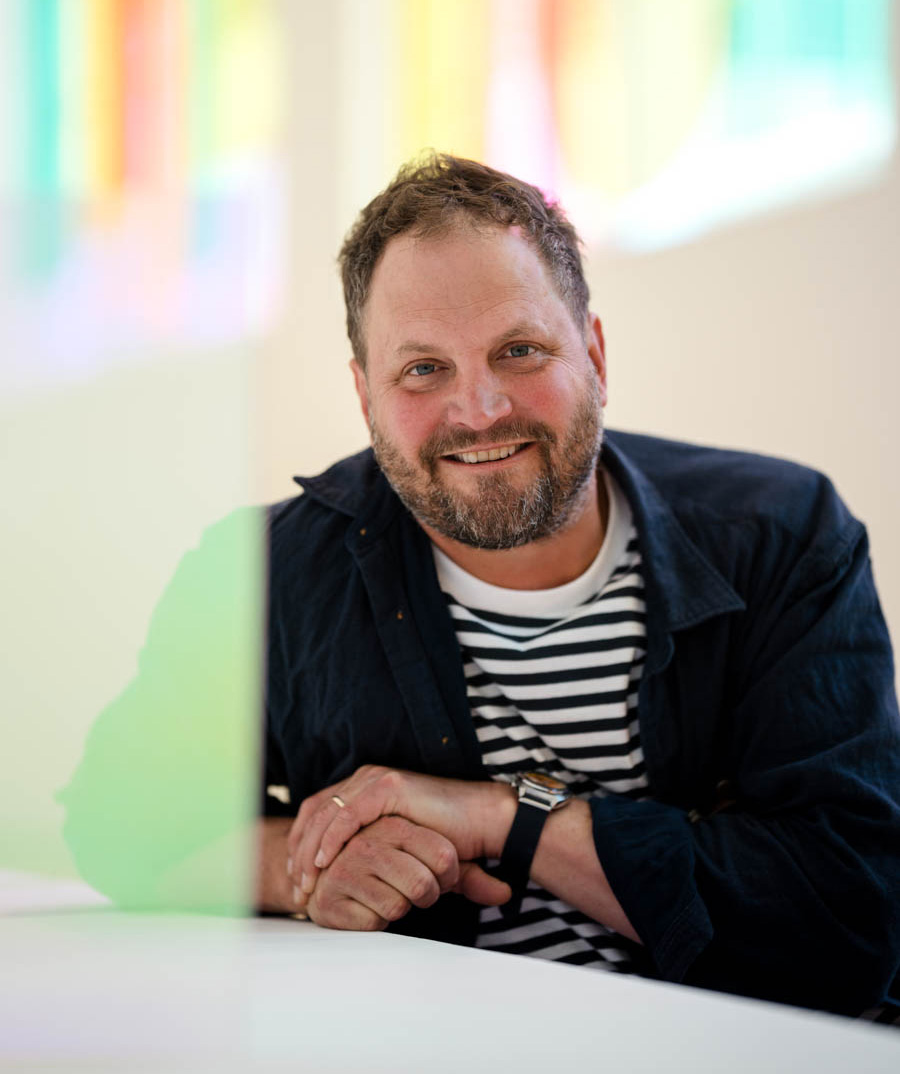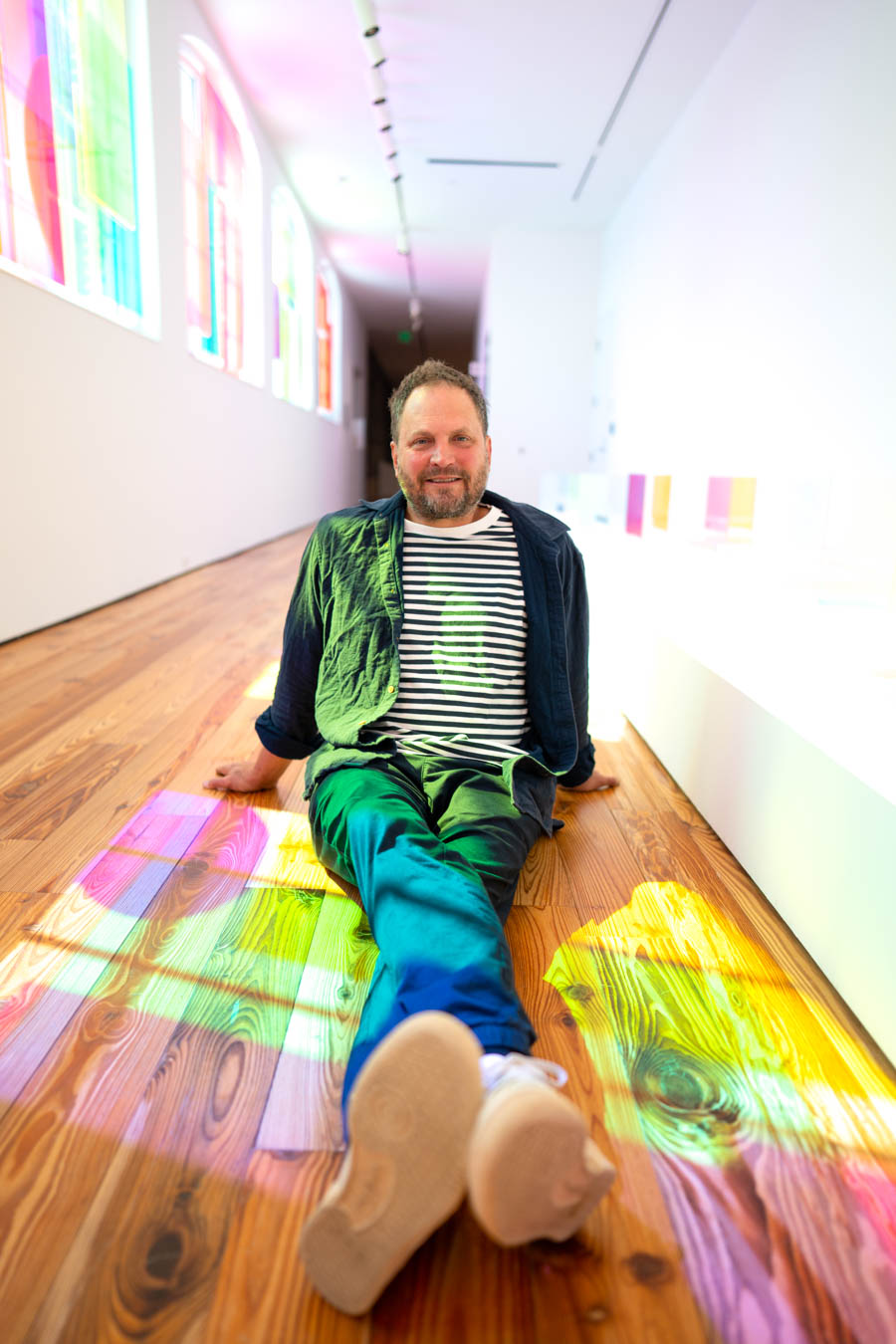For Sarasota-born artist Christian Sampson, his life is always in motion. It’s been that way since he was a young boy, sailing across the waters of the Sarasota Bay and has stayed in flux ever since — from his time spent at Ringling College of Art and Design to the decades in New York City as a contemporary artist to his recent relocation to Los Angeles. Although Sampson, who specializes in color-light projection, has made a career out of moving with light, he always brings pieces of his hometown along for the ride. Now, with his exhibit Vita In Motu, a permanent fixture at the Sarasota Art Museum (SAM), a part of Sampson, will forever be fixed to Sarasota. “To have grown up here, it’s a real honor to have a permanent piece back in my hometown,” says Sampson.

Sampson’s 2019 installation Vita in Motu - or “life in motion” was created for the Sarasota Art Museum’s inaugural exhibit Color. Theory. & (b/w). The installation, which is on view in the museum’s third-floor Jonathan McCague arcade, uses the building’s architecture to create an ever-changing light show–sunlight pours through the hallway’s wide, lens-covered windows, onto dichroic film sculptures, which projects the light onto the walls, floors, and windows of the space. The installation is more of an experience than a “traditional” art exhibit—as the sun descends throughout the day, eventually to be replaced by colored LED lights to create projections from the sculptures, the viewer can witness the art change in real time. “When art is working it allows the viewer to interact one on one with the piece. I want to create a sensory piece that allows the viewer to let colors evoke emotions, feelings, experiences. I want them to be able to formulate their own experiences to those elements,” says Sampson.
Sampson was approached about creating an installation for SAM’s opening back in 2018 after Ann Marie Russel, then the director of SAM, visited his studio in New York City. Sampson’s approach to the project, as is his approach to much of his work, was site-specific. “As the museum was finishing and opening she said that they had this space with these windows with a lot of light that might be good for an exhibit. I did a visit, brought some samples and just started experimenting with the way the sun’s trajectory was coming across the windows and floors. I was trying to think of a way that I could incorporate the windows and the space to have something dynamic and interactive that would both involve the viewer and enable the natural beauty and light of Florida to come through and hit these sculptures,” says Sampson.
Although Sampson’s work is decidedly contemporary in style, his methodology functions similarly to that of an artist in a more traditional medium, such as a painter. “I always think about how do I animate this space to make an interactive installation and create something that is 1 plus 1 equals another dimension? It’s like a blank canvas and then I use light as a paintbox to paint that space,” states Sampson.
If light is Sampson’s paint brush, then his palette is derived from the amalgamation of experiences from his childhood and formative years spent on Florida’s west coast. His time spent at Ringling College of Art and Design earning his BFA made a particular impression on Vita In Motu. “I worked for years at the Ca’ d’zan and the way the sun filtered through the stained glass windows made me think about this installation. My job at the Ringling was to change the lightbulbs that had burned out on the paintings. I would notice all the different ranges in color in the kelvin scale and how they affected the paintings differently,” says Sampson.
The bright pinks, blues, and yellows so prominent across Sampson’s work are a callback to the vibrant natural colors found in Florida. “I grew up on the water. I remember being transfixed by the coral reefs the first time I went snorkeling when I was five years old. The lights and colors of the environment shaped my palette as a young person. In Vita In Motu, I was especially trying to highlight that brilliant blue sky that gets a lot of clouds–I was trying to layer those colors so you get this reflection and projection that gives these clouds these forms and at the same time is multidimensional,” states Sampson.
From New York City to Los Angeles, Sampson’s career has taken him to every corner of the country. Through his work, however, the colors of Florida’s gulf coast–of his home, his childhood, his internal paintbrush–will live on no matter where they find themselves.









